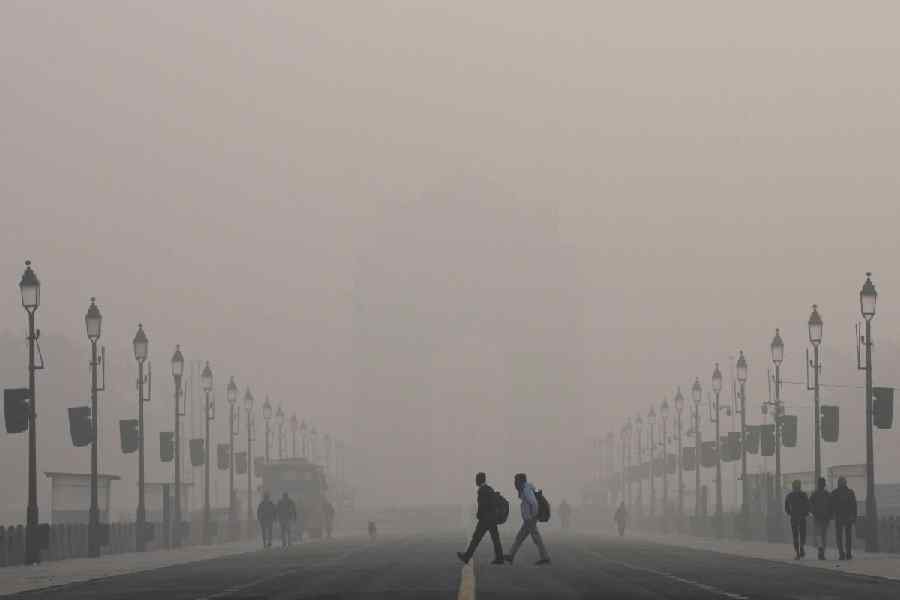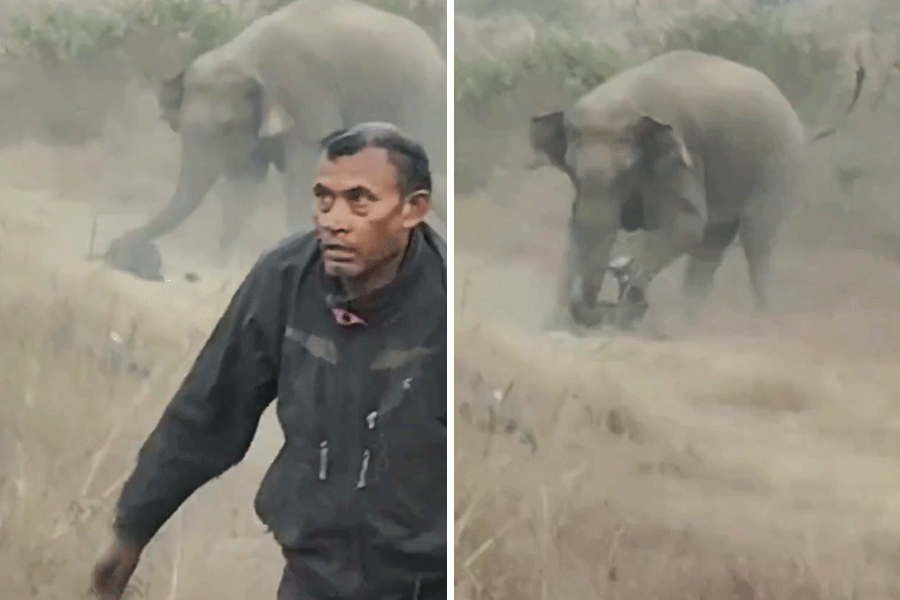 |
 |
| YESTERDAY ONCE MORE: Tagore with Elmhirst at Dartington, and (top) the opening ceremony of the festival |
Despite the nip in the air, the singers from the Spring Choir sang Tagore’s Orey grihobashi with full-throated gusto as they walked around the verdant grounds of Dartington Hall in Devon, in the UK. Behind them followed a group of young Bharatnatyam dancers and finally a group of Morris dancers. (Morris dance is an English folk dance.)
The procession — May Day parade meets Basanta Utsav in Santiniketan — did not seem out of place. The Bengali songs may have been sung by an all-white choir and the setting was the heart of the Devon countryside rather than the dry red earth of Bengal’s Birbhum district, but the spirit was pure Tagore. After all, it was happening in an institution set up under his inspiration.
It all began in 1922 when Leonard Elmhirst, a friend of Rabindranath Tagore, asked him where in England he should set up a school on the lines of Santiniketan. Elmhirst had worked as Tagore’s secretary from 1921 and set up the Institute of Rural Reconstruction in Sriniketan, near Santiniketan. The story goes that Tagore immediately replied “Devon”. The reason: the bard had visited Torbay and spent a pleasant holiday there.
Following his friend’s advice, Elmhirst and his American millionaire wife, Dorothy, soon bought the grand 14th century property in Dartington and started the Dartington Hall School as a centre of experimental study. Set on the banks of the river Dart, the picturesque place soon attracted artists and musicians from across the world. Much like Santiniketan, classes were often held outdoors.
Tagore himself visited twice, in 1926 and 1930. He walked the extensive grounds and painted. The room in which he stayed, now called the Tagore Room, still has the ink stain on the carpet where he had dropped his ink pot.
It was fitting, therefore, that Dartington Hall celebrated the bard’s 150th birth anniversary with a week-long festival of music, dance, art and poetry from May 1-7. The Great Hall reverberated with the sound of the tabla and the ghungroo and provided the venue for heated discussions on Tagore vs Gandhi. In another hall, two professors from the nearby Schumacher College explained to a slightly bewildered audience the relationship between Tagore and Einstein, and the knowledge of the universe with the aid of a colour wheel and references to Goethe and the Gaia theory (which sees the relationship between organic and inorganic surroundings on earth as being closely integrated). Anisur Rahman, the gentle elderly economist from Dhaka, made it to his talk even though he spent the previous night in hospital. “Tagore would have wanted me to be here,” he said, interspersing his talk with Tagore’s songs.
There was even a tangible presence of the bard at his birthday celebrations. On display at an exhibition was a lock of his beard which had been snipped after his death in 1941 and sent to Elmhirst. The brief telegram sent by Tagore’s son was also displayed: “Father passed away Thursday noon. Rathi.”
Tagore may have returned his knighthood to King George V in 1919 as a protest against the Jallianwala Bagh massacre, but Prince Charles was clearly an admirer. Fresh from the wedding of his son, Prince William to Kate Middleton, he sent a passionate message to the festival, regretting that he could not be there personally and asking the audience to rediscover Tagore’s “principles of balance, order and wholeness and put them into practice to restore equilibrium”. The Prince of Wales urged everyone to take inspiration from Tagore and reclaim “the ground of thought and practice for those of us who still hear the eternal wisdom of which he [Tagore] spoke”.
Last year, Dartington Hall Trust had faced severe criticism when it auctioned 12 paintings of Tagore which had been personally gifted by Tagore to Elmhirst. The sale drew criticism from West Bengal chief minister Buddhadeb Bhattacharyya, Rajat Ray, vice-chancellor of Visva Bharati, and many of the local residents of Totnes who signed a petition against it.
Murmurs about the event could still be heard in the tented cafes where Indian food was being served along with organic salads and Devon cream teas. The organisers of the festival had, however, decided to move on. Satish Kumar, curator of the Tagore festival and editor-in-chief of Resurgence magazine, who had planned this event for the last three years, preferred to focus on the present. He had ensured that a part of the funds received from the sale went into mounting the Tagore Festival.
“I think it’s important not just to remember Tagore but to see how his vision is relevant today,” Kumar told The Telegraph. One of the founders of Schumacher College, which is part of the Dartington Trust, Kumar strives to keep the spirit of Tagore alive in the region.
“This is the biggest festival of Tagore outside India,” said Minni Jain, one of the co-organisers of the festival. “The important thing is we want to keep it as grassroots-level as possible. We want to explore the ideas of how the West influenced the East and vice versa. This interaction is key to keeping the vision of Tagore alive.
“Over a hundred artistes, writers, thinkers and ecologists have been invited to the festival, including Sonal Mansingh, Aditi Mangaldas, Paban Das Baul, Amit Chaudhuri, Vandana Shiva, Deepak Chopra, William Radice, Clare Short and Mark Tully.
Given the interest from the crowds, it could well be turned into an annual event. Since all that remains in Dartington Hall today is a clip of Tagore’s beard, a collection of his caps and robes, and only one of his paintings, it would at least be a way of keeping his spirit alive in the institution he inspired.











